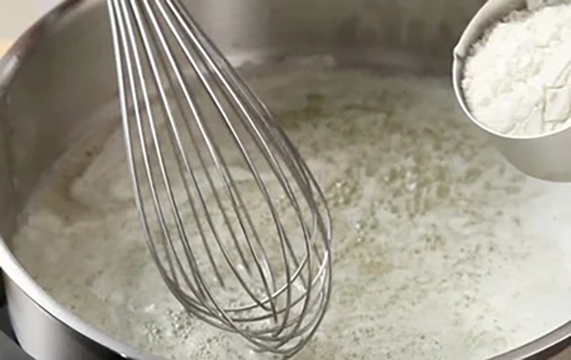What are Thickening Agents?
Different thickening agents and techniques can be used to thicken sauces and soups. This guide will explore these different methods and provide tips and tricks for choosing the right one for your dish.
Cooking is an art; like every art, it requires skill and knowledge, particularly when it comes to thickening agents. Thickening agents are substances that help to increase the viscosity of liquids, making them thicker and more substantial. They are essential ingredients in many dishes and can create a range of textures, from smooth and creamy to thick and chunky.
If you are new to cooking or want to improve your skills in the kitchen, this guide to thickening agents is for you. We will explore the most common thickening agents used in cooking, from roux to xanthan gum and everything in between.
Roux
Roux is a mixture of equal parts flour and fat, traditionally butter, used to thicken sauces, soups, and stews. The mixture is cooked over low heat until it turns a light brown color, giving the dish a nutty flavor. Roux is a classic thickening agent in French dishes such as béchamel and velouté.
Cornstarch
Cornstarch is a fine white powder made from corn and a popular thickening agent. It is an excellent choice for thickening liquids, such as sauces and gravies, that should not be boiled. Cornstarch can also be used to thicken fruit pies and puddings.
Arrowroot
Arrowroot is a starchy substance that comes from the roots of the arrowroot plant. It is a common thickening agent in Asian and Caribbean cuisine and is often used in soups, sauces, and desserts. Arrowroot is a great alternative to cornstarch for those with allergies or dietary restrictions.
Tapioca
Tapioca is a starch made from the roots of the cassava plant. It is commonly used to thicken fruit pies, puddings, and soups. Tapioca is gluten-free and is an excellent choice for those with celiac disease or gluten intolerance.
Gelatin
Gelatin is a protein that is derived from animal collagen. It is commonly used to thicken desserts, such as jellies and custards. Gelatin is also used in savory dishes, such as aspic and terrines.
Agar-Agar
Agar-agar is a jelly-like substance that is derived from seaweed. It is commonly used in Asian cuisine and is a popular vegan alternative to gelatin. Agar-agar is used to thicken desserts, such as puddings and jellies.
Xanthan Gum
Xanthan gum is a synthetic compound produced by fermenting sugar with the bacteria Xanthomonas campestris. It is a popular thickening agent in gluten-free baking in sauces, salad dressings, and soups. Xanthan gum is a great choice for those with celiac disease or gluten intolerance.
Liaison
Liaison is a term applied to the process of thickening cream sauces utilizing egg yolks. The egg yolk is generally tempered, so the yolks may not become just scrambled by the quick application of heat. The result is a silky, smooth product with a pleasant texture.
Thickening agents are an essential component of cooking, and understanding the different types available can help you create dishes with the desired texture and consistency. Whether it is roux, xanthan gum, or any of the aforementioned agents, there is a thickening agent for every need. So, the next time you are in the kitchen, be sure to experiment with different types of thickening agents to create dishes that are not only delicious but also perfectly textured.


